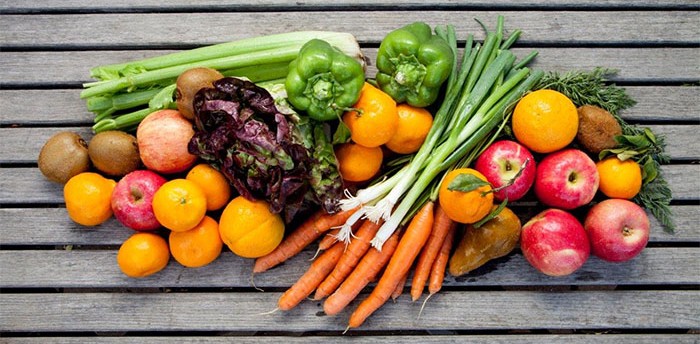Umami rich foods are some of the most satisfying dishes you can serve from a food truck. Umami is the flavor of glutamate, an amino acid that is one of the essential building blocks of protein. Not coincidentally, many Japanese foods are loaded with umami, including soy, seaweed, green tea, miso and dashi. It is also significantly present in Parmesan cheese, mushrooms, truffles, potatoes, olives, tomatoes and nearly every form of meat and seafood.
Why You Should Be Adding Umami To Your Menu
In general, the more umami present, the more flavorful and satisfying food will be. That applies not just to ingredients, but also to the techniques used to cook or process them, from grilling to drying and aging. The umami in many foods is accentuated once their glutamates have been broken down through the processes of fermentation, aging or curing. It’s also increased by the process of ripening, as in a tomato. Likewise, older animals with very well-exercised muscles tend to have more umami, as do fish that are heavy swimmers, such as mackerel, salmon and tuna.
Aged cheeses are more flavorful than young ones; sun-dried tomatoes have a more concentrated flavor than fresh ones. In addition to its own yummy taste, umami alters the perception of other tastes: Sodium seems saltier, sugar sweeter, and sour and bitter less acerbic and biting. It also enhances the perception of thickness and complexity, and improves the overall palatability.
Umami has become an increasingly important tool for balancing the tastes, aromas, and textures in recipe development. Small wonder, then, that food truck chefs are really starting to play with the concept of umami ingredients and techniques.
Foods that add more umami to your food truck menu:
PROTEINS
- Aged Beef. Nothing quite matches the umami flavor of dry-aged beef. A process which creates a greater concentration of beef flavor and also causes the meat’s natural enzymes to break down the connective tissue in the muscle, making the beef more tender.
- Aged Cheese. If cheese is milk’s leap to immortality, then aging cheese slingshots it into umami heaven.
- Cured Pork. Of all the meats, pork is particularly high in glutamate; cure it, smoke it, brine it, salt it, dry it or otherwise process pork, and you’ve got even more umami power.
- Shellfish. Although most seafood, including shrimp and squid as well as finfish, is umami-rich. Shellfish such as clams, scallops and mussels represent the mother lode.
VEGETABLES
- Mushrooms. Mushrooms of all types are a valuable source of umami. In fact, all fungi are, including the mold on blue-veined cheeses and even yeast.
- Onions. Although the onion may not have as much measurable free glutamates as umami-bomb vegetables like mushrooms and tomatoes, it certainly is accessible. It’s also inexpensive, endlessly versatile and available year-round.
- Tomato Products. Tomatoes contain high levels of umami providing glutamate and are thus a rich and vibrant natural source of umami — all the more so when they are ripe, dried, cooked, processed or otherwise manipulated, as in ketchup, sundried tomatoes or tomato paste. Roasting tomatoes in a slow oven is one of the easiest in-house ways to boost umami flavor as well.
- Sauerkraut & Kimchi. Fermentation is all about umami, and couple that with the current interest in DIY pickling and preserving of all kinds and it’s easy to see why so many chefs are making sauerkraut and the funky Korean fermented vegetables known as kimchi.
- Sweet Potatoes. Although sweet potatoes are not as high in umami as regular white potatoes, this colorful, starchy vegetable is gaining distinctive menu traction.
OTHER FOODS
- Fermented Bean Paste. Soy products — including tofu, soy sauce and soybeans themselves — are loaded with umami, perhaps none more appealingly than the fermented soybean-based condiment known as miso.
- Fish Sauces. Probably no single ingredient is more illustrative of the principles of umami than fish sauce, the funky, fermented stuff that phobes might call rotted but philes the world over have revered for centuries.
- Seaweed. Cultivated in ropes in the seas of Japan and Korea, this salty, edible kelp is used extensively in Japanese cooking, and is one of the three ingredients in dashi, the simple stock that is a defining flavor profile of the cuisine.
The Bottom Line
Many umami rich foods are some of the most satisfying foods in the world. Think of a big sizzling burger with sautéed mushrooms and fries. Or serving a bowl of pasta and tomato sauce, showered with grated Parmesan cheese. Foods like these have a deep, almost universal appeal; we crave them. That’s umami in action.
We hope you found this article helpful in adding the fifth flavor to your food truck’s menu. To continue this discussion share your thoughts below or on social media. Facebook | Twitter




